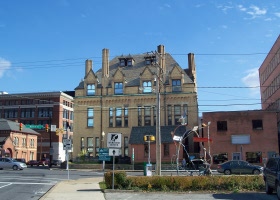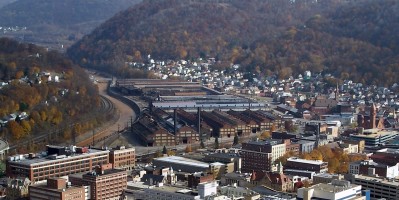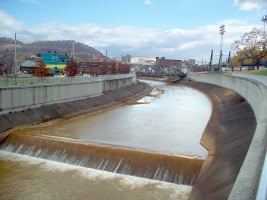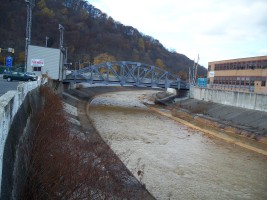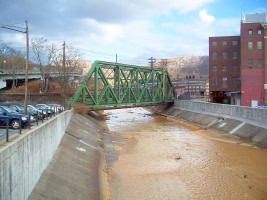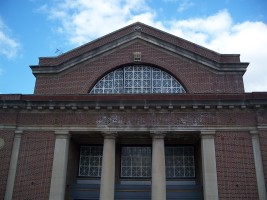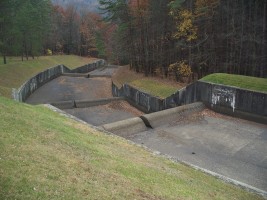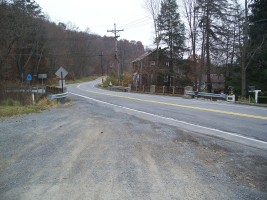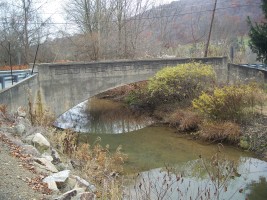Johnstown, PA
Swiss Amish immigrant Joseph Johns (1749-1813, originally named Tschantz or Schantz) settled at the confluence of the Stonycreek and Little Conemaugh rivers in 1794. In 1800 he deeded most of his farm for the formation of the village of Conemaugh, taking the name of of an Indian trading village that had been on the site. In 1807, Johns relocated to a farm nine miles south and passed away six years later, but in 1834 the growing village was legally renamed Johnstown in his honor. (reference)
The remote location of the village and the mountainous terrain limited economic development in the area, despite the abundance of natural resources. To rectify the situation, in 1829 the state began building the Main Line, a series of railroads and canals that connected Pittsburgh in the west with Philadelphia in the east. Johnstown was the point where the 36-mile Allegheny Portage Railroad from Hollidaysburgh met the 103-mile Western Division Canal that extended into Pittsburgh and the town grew to meet the needs of traffic on the Main Line. The canal was only marginally successful and was supplanted by completion of the Pennsylvania Railroad through town in 1852. This lead to the simultaneous opening of the Cambria Iron Company, which supplied the rapidly expanding railroads with iron and used them for transportation of their products.
Johnstown is perhaps best known for its most ignominious moment. On May 31, 1889, a poorly-maintained earthen dam upstream on the Little Conemaugh River burst in heavy rains, sending a 20-million-ton wall of water down the valley towards Johnstown. The 37-foot-high wave hit Johnstown at 4:07 PM, bounced off Yoder Hill, backwashed up the Stonycreek River and demolished almost everything in its path. The debris accumulated against the stone railroad bridge just north of town and caught fire later that evening, burning alive those unfortunates who had been trapped in the rubble.
The final official death toll was 2,209 and many of the bodies were buried unidentified. The relief efforts were lead by Clara Barton in the first major such effort for the American Red Cross. Although reconstruction of the city and surrounding infrastructure took years, the heavily-damaged mill resumed production a few days after the flood and was back to full production within a year and a half.
The burst dam had originally been built to supply water for the Main Line canals but was abandoned when the canal was supplanted by the railroad. It was subsequently purchased by a group of speculators to create the South Fork Fishing and Hunting Club, a resort for wealthy residents of Pittsburgh who wanted a pastoral escape from the bustle and grime of that growing industrial city. The club opened in 1881 but shoddy repairs and alterations to the dam made it structurally unsound. As would be expected from a Gilded Age court, the dam break was ruled an "Act of God" and the wealthy patrons of the club were not held legally responsible or required to give any compensation to the survivors of the flood.
